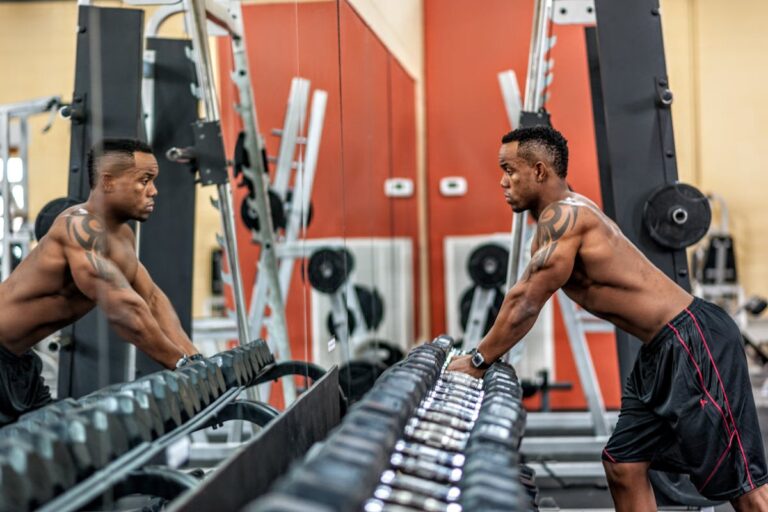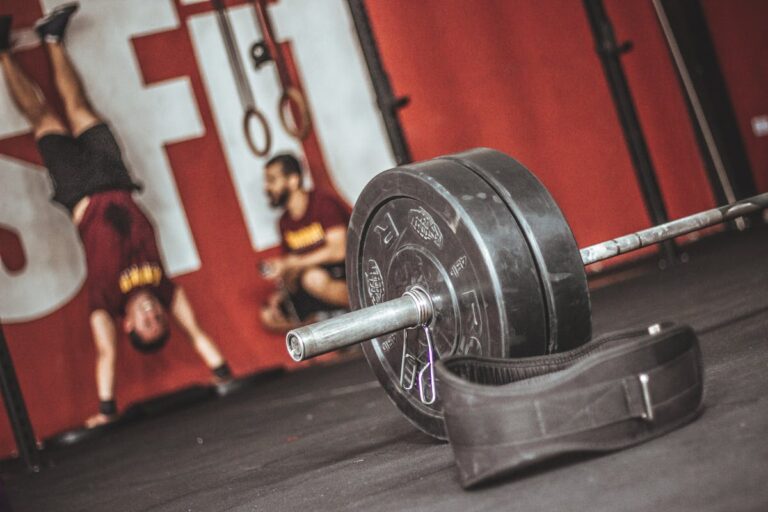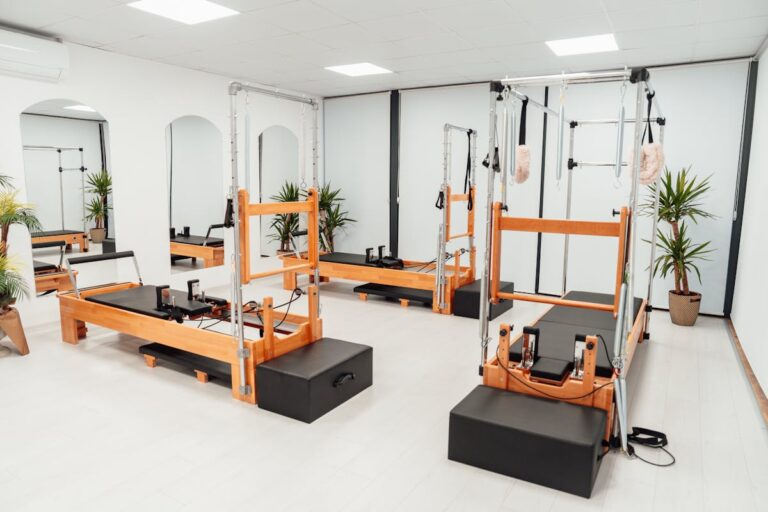Elite Cycler Ctrength Training Program
Elite Cycler Ctrength Training Program
Elite Cycler Strength Training Program: Enhance your cycling performance with our specialized strength training regime designed for elite cyclists. Boost endurance, power, and speed.
Table of Contents
Introduction to Elite Strength Training for Cyclists
Elite strength training for cyclists is a specialized program designed to enhance performance, endurance, and overall physical conditioning. This form of training aims to build muscle strength, improve power output, and decrease the risk of injury. Cyclists must focus on various components to maximize their efficiency on the bike.
Key Components Elite Cycler Ctrength Training Program
- Muscle Endurance: Strength training sessions help increase muscle endurance, enabling cyclists to pedal with greater efficiency and for extended periods.
- Power Output: Power is critical for cycling, especially in competitive scenarios. Strength training enhances the force that a cyclist can exert, thereby improving their speed and acceleration.
- Injury Prevention: Incorporating strength exercises can correct muscle imbalances and thus prevent common cycling injuries such as knee pain, lower back pain, and hip flexor strains.
Core Strength Exercises
- Squats: Improve lower body strength, essential for powerful pedal strokes.
- Deadlifts: Target the posterior chain, including the hamstrings, glutes, and lower back, contributing to optimal cycling posture.
- Lunges: Enhance balance and stability while targeting major leg muscles.
- Planks: Build core strength, critical for maintaining efficient riding positions.
Importance of Periodization
Periodization is a strategic approach to cycling strength training, breaking the training year into different phases to peak at specific times, such as important races. Each phase has distinct goals:
- Base Phase: Focus on developing core strength and correcting imbalances.
- Build Phase: Increase intensity and volume, incorporating more cycling-specific movements.
- Peak Phase: Optimize performance through high-intensity, low-volume training to refine power and speed.
- Recovery Phase: Allow the body to recuperate, preventing overtraining.
Integration with Cycling Training
To achieve optimal results, strength training should be integrated seamlessly with on-bike training. Cyclists need to balance both aspects of their regime, ensuring neither is neglected.
- Scheduling: Plan strength sessions around cycling workouts to avoid fatigue and enhance recovery.
- Recovery: Adequate rest and nutrition are vital to allow muscles to repair and grow.
- Adaptation: Gradually increase intensity and complexity of exercises to build strength without risking injury.
Overall, elite strength training for cyclists requires a well-rounded approach, incorporating various exercises tailored to boost cycling performance and prevent injuries.
Understanding the Benefits of Strength Training for Cyclists
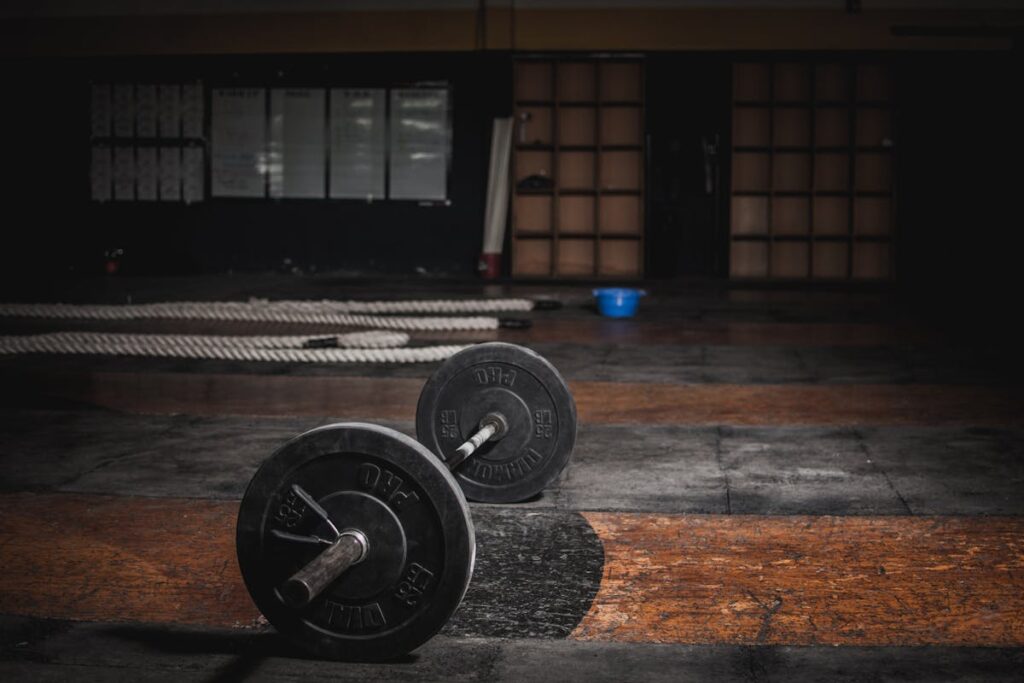
Strength training holds significant advantages for cyclists, directly impacting their performance and well-being. These benefits revolve around enhancing muscle power, endurance, and overall cycling efficiency.
Enhanced Muscle Power
Strength training increases muscle power, allowing cyclists to generate more force with each pedal stroke. This improves the ability to tackle hills, achieve higher speeds, and handle challenging terrains. Exercises such as squats and deadlifts target major muscle groups used in cycling, fostering stronger legs and a more powerful core.
Improved Endurance and Stamina
Regular strength training boosts muscular endurance, ensuring muscles can sustain activity for longer periods without fatigue. This translates to prolonged, more efficient riding sessions. Weight-bearing exercises improve the oxidative capacity of muscles, enhancing their ability to use oxygen—critical for long-distance rides and endurance events.
Injury Prevention
Strength training fortifies muscles, tendons, and ligaments, reducing the risk of common cycling injuries. Stronger muscles around joints stabilize and support them, mitigating stress and strain. Key exercises, including lunges and step-ups, enhance joint and overall body stability, acting as a preventative measure against injury.
Enhanced Metabolic Efficiency
Increased muscle mass elevates basal metabolic rate (BMR), aiding in weight management. Efficient energy use during rides is crucial for competitive cyclists. Engaging in strength training helps control body composition by promoting lean muscle growth and fat reduction, ultimately benefiting cycling performance.
Improved Cycling Economy
Strength training leads to better pedaling efficiency, optimizing the energy expenditure during rides. Enhanced neuromuscular coordination enables smoother, more effective power transfer from muscles to the bike, reducing unnecessary exertion. Core-focused exercises such as planks and Russian twists stabilize the torso, contributing to a more balanced and efficient riding posture.
Better Recovery Times
After intense riding sessions, strength-trained muscles recover more quickly. This is due to improved muscle resilience and the ability to repair micro-damages efficiently. It allows cyclists to maintain their training schedule with less downtime, ensuring consistent progress and performance improvement.
Incorporating strength training into a cyclist’s regimen is instrumental in achieving peak physical condition, enhancing overall cycling proficiency, and ensuring longevity in the sport.
Setting Your Fitness Goals
Setting well-defined fitness goals is essential for any elite cycler’s strength training program. Goals provide direction, motivation, and a clear framework for measuring progress.
Assessing Current Fitness Levels
Begin by evaluating the current fitness levels. This can involve:
- Recording the time taken to complete a specific cycling route.
- Measuring endurance and aerobic capacity through standardized tests.
- Assessing muscle strength and flexibility using gym-based assessments or handheld dynamometers.
Defining Short-Term and Long-Term Goals
Develop both short-term and long-term goals:
- Short-Term Goals:
- Improve weekly mileage by 10%.
- Increase leg press weight by 15%.
- Enhance flexibility with daily stretching routines.
- Long-Term Goals:
- Complete a century ride within six months.
- Improve race finish times by 20% over a year.
- Achieve an optimal power-to-weight ratio.
Specific, Measurable, Achievable, Relevant, Time-Bound (SMART) Criteria
Goals should adhere to the SMART criteria:
- Specific: Clear and precise.
- Measurable: Quantifiable metrics to gauge progress.
- Achievable: Realistic and within reach.
- Relevant: Aligned with overall cycling ambitions.
- Time-Bound: Deadline-driven goals to ensure urgency and focus.
Incorporating Flexibility
While setting goals, it’s important to maintain flexibility. Goals should adapt to:
- Progress pace.
- Changes in personal circumstances or cycling schedules.
- Adjustments based on new performance data.
Tracking Progress
Monitor and record progress regularly:
- Use cycling apps and wearable technology to log workouts.
- Maintain a training journal for reflections and adjustments.
- Schedule periodic assessments to recalibrate goals if necessary.
Seeking Professional Guidance
Consulting a coach or fitness expert can provide:
- Personalized goal-setting frameworks.
- Specialized knowledge for optimizing training plans.
- Motivation and accountability through regular check-ins.
Adjustments and Revisions
Be open to refining goals:
- Celebrate small victories and milestones.
- Revise targets based on feedback and results.
- Ensure goals remain challenging yet within achievable limits.
Setting accurate and motivating fitness goals is foundational for success in an elite cycler’s strength training program.
Assessing Your Starting Point
Before diving into an elite cycler strength training program, it is essential to evaluate the current fitness level. This initial assessment will help in customizing the program to fit individual needs and goals, ensuring optimal results. Here are key aspects to consider:
Physical Fitness Evaluation
Conduct a comprehensive physical fitness evaluation to establish a baseline. Essential components include:
- Weight and Body Composition:
- Measure body weight and calculate body mass index (BMI).
- Conduct a body composition analysis to determine the percentage of body fat, muscle mass, and bone density.
- Cardiovascular Fitness:
- Perform a VO2 max test to assess aerobic capacity.
- Monitor heart rate during resting, exercise, and recovery periods.
- Muscular Strength and Endurance:
- Test one-rep max (1RM) for exercises like squats, deadlifts, and bench presses.
- Evaluate muscle endurance with exercises such as plank holds and push-ups for a set duration.
Flexibility and Mobility Assessment
Assess flexibility and joint mobility to identify any limitations that may impact training:
- Flexibility Tests:
- Conduct sit-and-reach tests to evaluate hamstring and lower back flexibility.
- Perform shoulder flexibility tests to check the range of motion.
- Mobility Work:
- Assess hip and ankle mobility for squatting and other lower body movements.
- Evaluate thoracic spine mobility, which is crucial for cyclists who maintain a hunched position.
Performance Metrics
Establish performance metrics relevant to cycling to guide training:
- Power Output:
- Use a power meter to measure watts generated during cycling efforts.
- Record peak power and sustained power outputs over various intervals (e.g., 5 seconds, 1 minute, 5 minutes).
- Cadence:
- Measure pedal cadence (revolutions per minute) during different cycling intensities.
- Assess optimal cadence ranges for efficiency and performance.
- Speed and Distance:
- Track average speed over different terrain and conditions.
- Calculate average distance covered in training sessions.
Health and Injury History
Review overall health and previous injury history to customize training while minimizing the risk of re-injury:
- Medical Clearance:
- Obtain medical clearance if there are preexisting health concerns.
- Consult with a physician or physical therapist regarding any past injuries.
- Injury Prevention:
- Focus on strengthening weak areas to reduce the likelihood of re-injury.
- Include specific exercises for injury-prone regions like knees and lower back.
Personal Goals and Motivation
Identify personal goals and motivational drivers to tailor the training program for maximum adherence and effectiveness:
- Goal Setting:
- Define specific, measurable, achievable, relevant, and time-bound (SMART) goals.
- Outline short-term and long-term objectives, such as improving race times or increasing power output.
- Motivation Factors:
- Determine intrinsic and extrinsic motivational factors.
- Leverage these factors to maintain commitment and enthusiasm for the program.
By thoroughly assessing the starting point, individuals can create a targeted and efficient strength training program that aligns with their cycling goals and physical capabilities.
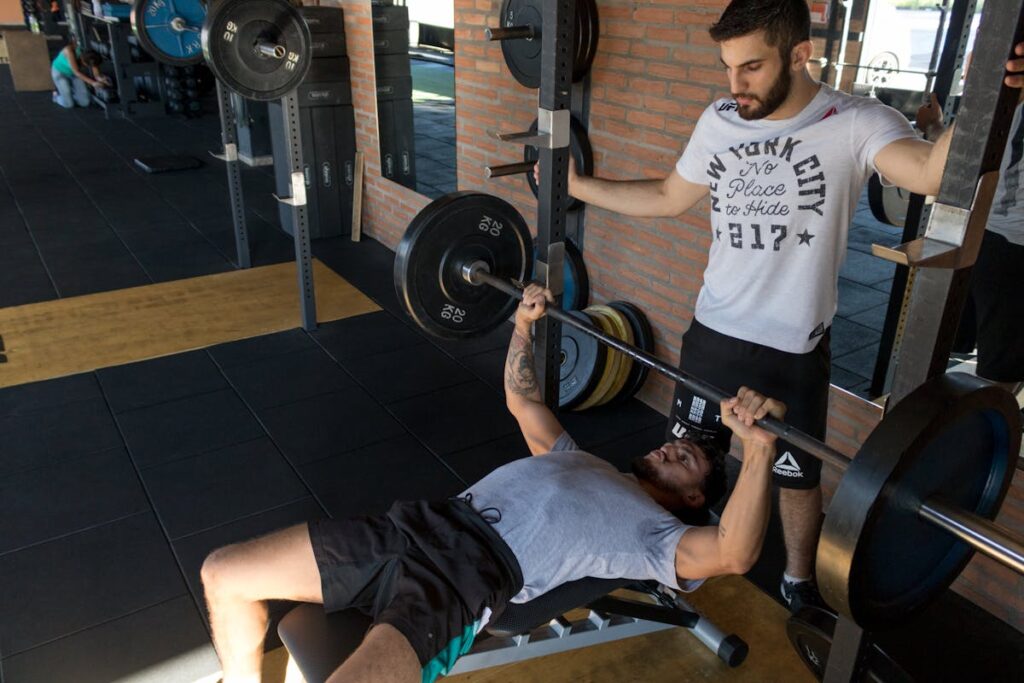
Essential Equipment and Gear
To maximize the benefits of an elite cycler strength training program, having the proper equipment and gear is crucial. Below is a comprehensive list of the essential items one should consider:
- Bicycle Trainer A high-quality bicycle trainer is fundamental. It allows an individual to ride indoors, maintaining conditioning through variable resistance settings.
- Power Meter Power meters are indispensable tools that measure performance accurately, delivering critical data on power output to fine-tune training sessions.
- Heart Rate Monitor Monitoring heart rate is vital to ensure training intensity is within the optimal range for maximizing cardiovascular benefits and improving endurance.
- Cycling Shoes Proper cycling shoes provide indispensable support and enhance power transfer during pedaling. Look for shoes with stiff soles and secure closure systems.
- Resistance Bands and Weights Resistance bands and free weights such as dumbbells and kettlebells are essential for off-bike strength training exercises targeting the core, legs, and upper body.
- Foam Roller Recovery is just as crucial as training. A foam roller assists in myofascial release, reducing muscle soreness and enhancing recovery speed.
- Yoga Mat A non-slip yoga mat is important for performing floor exercises, stretches, and core workouts with stability and comfort.
- Hydration System Staying hydrated is key. A reliable hydration system, such as water bottles and bottle cages, ensures that the cycler stays well-hydrated through intense sessions.
- Cycling Apparel Proper attire, including padded shorts, moisture-wicking jerseys, and gloves, provides comfort, reduces friction, and controls sweat during intense training.
- GPS Cycling Computer A GPS cycling computer tracks ride data such as distance, speed, and elevation gain. It’s useful for monitoring progress and setting performance benchmarks.
- Recovery Tools Massage guns and ice packs are beneficial for muscle recovery, aiding in alleviating tension and reducing inflammation after rigorous workouts.
- Cycling Cap and Eyewear A cycling cap protects from the sun and absorbs sweat, while cycling-specific eyewear shields eyes from debris and harmful UV rays.
- Trainer Road or Zwift Subscription Platforms like TrainerRoad or Zwift offer structured training plans, virtual courses, and motivational features to enhance and diversify indoor training sessions.
By equipping oneself with the above items, an elite cycler can ensure a well-rounded and effective strength training program, catering to their performance and recovery needs.
Warm-Up and Mobility Exercises
A comprehensive warm-up and mobility routine is essential for elite cyclists to prepare their bodies for the rigorous strength training exercises ahead. Proper warm-up and mobility exercises enhance muscle flexibility, prevent injuries, and improve overall athletic performance.
Dynamic Stretching
Dynamic stretching involves moving parts of the body through a full range of motion to increase blood flow and muscle temperature. Key dynamic stretches for cyclists include:
- Leg Swings: Forward and sideways leg swings to loosen hip flexors and hamstrings.
- Arm Circles: Small and large arm circles to warm up the shoulders.
- Torso Twists: Twisting the upper body to engage the core and improve spinal mobility.
- Walking Lunges: Stepping forward into lunges to stretch the hip flexors and quadriceps.
- Knee to Chest: Bringing the knee to the chest to stretch the glutes and hamstrings.
Foam Rolling
Foam rolling is a technique used to release muscle tightness and trigger points. It promotes blood flow and enhances flexibility:
- Quads and IT Band: Rolling along the quadriceps and iliotibial band to reduce tension.
- Hamstrings: Rolling from the glutes to the back of the knee.
- Calves: Applying pressure from the Achilles tendon to the knee.
- Upper Back: Rolling the thoracic spine.
Joint Mobilization
Joint mobilization exercises focus on improving the range of motion and stability in critical areas:
- Hip Openers: Exercises like hip circles to increase hip flexibility.
- Spinal Rolls: Rolling the spine from a quadruped position to enhance spinal mobility.
- Shoulder Rolls: Rolling the shoulders forward and backward.
Activation Drills
Activation drills prepare specific muscle groups for the upcoming workout:
- Glute Bridges: Activating the glutes and lower back.
- Band Walks: Using resistance bands to engage the hip abductors.
- Scapular Push-Ups: Engaging the scapular muscles for shoulder stability.
Incorporating these warm-up and mobility exercises into the training routine will ensure that cyclists are adequately prepared for strength training, reducing potential injury risk and enhancing performance.
Core Stability and Strength Development
Core stability and strength are critical for elite cyclists. A strong core enhances balance, power transfer, and overall control on the bike, which directly improves performance. The following components are essential for effective core stability and strength development.
Key Factors
- Functional Core Exercises: Incorporating exercises that mimic cycling movements can significantly impact performance. These include:
- Planks: Front, side, and reverse planks to target different muscle groups.
- Russian Twists: To enhance rotational strength and flexibility.
- Bird Dogs: To improve coordination and core activation.
- Frequency and Consistency: Regular core workouts, 2-3 times a week, are vital for developing and maintaining strength. Consistent training prevents muscle imbalances and reduces the risk of injury.
Exercise Techniques
- Planks:
- Maintain a neutral spine.
- Engage the entire core, including the abdominal muscles and lower back.
- Hold for 30-60 seconds, gradually increasing duration as strength improves.
- Russian Twists:
- Sit on the floor with knees bent, lean back slightly.
- Hold a weight or medicine ball and twist the torso side to side.
- Aim for 2-3 sets of 15-20 repetitions.
- Bird Dogs:
- Start on hands and knees, extend one arm and the opposite leg simultaneously.
- Keep the back flat and hips level.
- Hold for a few seconds, then return to the starting position.
- Repeat for 10-15 repetitions on each side.
Breathing and Engagement
Proper breathing and muscle engagement are crucial for maximizing the benefits of core exercises. Cyclists should:
- Exhale deeply during exertion phases.
- Engage the core by pulling the navel towards the spine.
- Avoid holding their breath, as it can lead to muscle fatigue and reduced performance.
Progressive Overload
For continual improvement, progressive overload must be implemented. This involves:
- Gradually increasing the intensity or resistance of core exercises.
- Incorporating advanced movements such as stability ball planks or cable twists.
- Monitoring progress and adjusting the training load accordingly.
Integration with Cycling
Integrating core stability workouts with cycling routines ensures comprehensive strength development. Stationary bike sessions with core-focused intervals can be beneficial, such as:
- Alternating between high-intensity sprints and core stabilization drills.
- Performing core exercises immediately before or after cycling workouts.
By maintaining a structured and consistent approach to core stability and strength development, elite cyclists can enhance their performance, reduce the risk of injury, and achieve peak physical condition.
Upper Body Strengthening Workouts
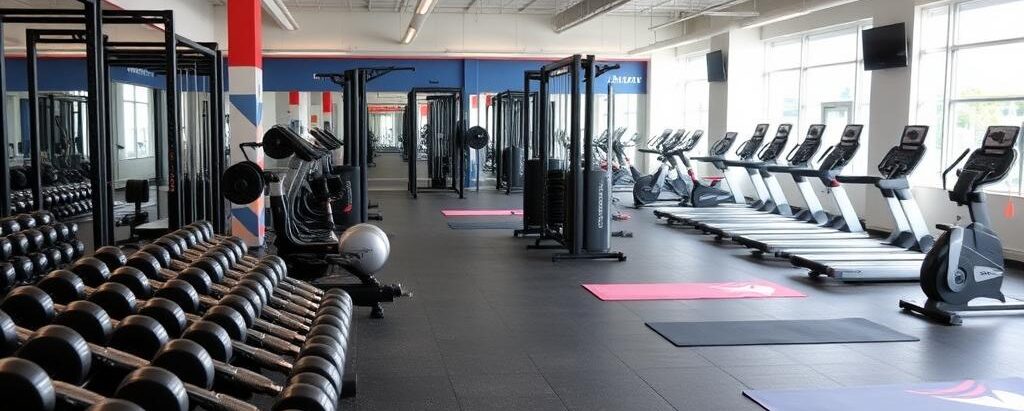
Upper body strength is crucial for elite cyclists to maintain balance, control the handlebars, and endure long rides. This section outlines effective workouts targeting the upper body to enhance overall cycling performance:
- Push-Ups:
- Engage chest, shoulders, and triceps.
- Perform 3 sets of 12-15 repetitions.
- Maintain a straight line from head to heels throughout the movement.
- Dumbbell Bench Press:
- Targets pectoral muscles, triceps, and shoulders.
- Execute 3 sets of 10-12 repetitions.
- Emphasize controlled movement, lowering weights slowly.
- Pull-Ups:
- Enhance back, shoulders, and biceps.
- Aim for 3 sets of 8-10 repetitions.
- Use an overhand grip, and avoid swinging.
- Seated Rows:
- Focus on the upper back and biceps.
- Complete 3 sets of 10-12 repetitions.
- Keep the back straight and pull towards the abdomen.
- Overhead Shoulder Press:
- Strengthen shoulders, triceps, and upper chest.
- Conduct 3 sets of 10-12 repetitions.
- Begin with dumbbells at shoulder height, press overhead.
- Plank Rows:
- Works the core, shoulders, and back.
- Perform 3 sets of 10-12 repetitions each side.
- Ensure stability by maintaining a plank position.
- Dumbbell Bicep Curls:
- Isolate and develop biceps.
- Execute 3 sets of 12-15 repetitions.
- Maintain controlled motion with elbows by the side.
- Tricep Dips:
- Target the triceps and chest.
- Perform 3 sets of 10-15 repetitions.
- Use parallel bars or a bench, lowering the body until elbows are at 90 degrees.
- Lat Pulldowns:
- Activate the latissimus dorsi and biceps.
- Complete 3 sets of 12-15 repetitions.
- Use a wide grip and pull bar to the upper chest.
Proper form and regularity are crucial for these workouts to be effective. Implementing these exercises in the strength training routine will result in a well-rounded upper body, enhancing an elite cyclist’s capability on the bike.
Lower Body Power and Endurance Training
The lower body is pivotal in cycling, as it delivers the power and endurance required for elite performance. To optimize strength training for cyclists, a mix of power and endurance exercises must be included. Notably, focus should be placed on exercises that target the quadriceps, hamstrings, glutes, and calves. Key components are as follows:
Strength Training Exercises:
- Squats:
- Back Squats
- Front Squats
- Bulgarian Split Squats
- Deadlifts:
- Traditional Deadlifts
- Romanian Deadlifts
- Lunges:
- Walking Lunges
- Reverse Lunges
Plyometric Exercises:
- Box Jumps
- Jump Squats
- Lateral Bounds
Endurance Exercises:
- Step-ups:
- Weighted Step-ups
- Alternating Step-ups
- Leg Press
- Cycling-Specific Movements:
- Single-leg Pedal Strokes
- High Cadence Drills
Integration and Execution
A balanced training program should integrate both power and endurance exercises. Structured sessions might include the following:
- Warm-up Routine:
- Dynamic stretches (Leg Swings, Hip Circles)
- Light cardiovascular activity (5-10 minutes of jogging or cycling)
- Power-focused Workout:
- Heavy Squats (3 sets of 5 reps)
- Deadlifts (3 sets of 5 reps)
- Box Jumps (3 sets of 10 reps)
- Endurance-focused Workout:
- Weighted Step-ups (3 sets of 15 reps per leg)
- High Rep Lunges (3 sets of 20 reps)
- Leg Press (3 sets of 15 reps)
Recovery and Adaptation
Proper recovery is essential to maximize gains and prevent injuries. Cyclists should consider:
- Rest Days: Incorporating at least one rest day per week.
- Active Recovery: Light activities such as yoga or swimming.
- Nutrition: High-protein diet paired with adequate hydration.
Incorporating a variety of exercises focused on both power and endurance will enable cyclists to enhance their lower body strength, leading to improved performance on the bike. This structured approach ensures comprehensive development and readiness for competitive cycling.
Incorporating Plyometrics for Explosive Power
Plyometric exercises are pivotal for cyclists aiming to enhance their explosive power. These high-intensity movements leverage the strain-reflex mechanism, enabling rapid force generation crucial for burst sprints and steep inclines. Integrating plyometrics into the training regimen can substantially benefit overall performance on the bike.
Key Plyometric Exercises for Cyclists
- Box Jumps: An effective lower body plyometric exercise. The athlete begins by standing in front of a sturdy platform, such as a box. A powerful jump is executed, landing both feet simultaneously on the box. This movement trains the quadriceps, hamstrings, and calves, enhancing explosive leg power.
- Squat Jumps: Starting in a squat position, the individual propels upward with maximal effort, ensuring a soft landing back into the squat stance. This exercise targets the glutes, quads, and core muscles, essential for power delivery during cycling.
- Lateral Bounds: The athlete jumps sideways from one foot to the other, focusing on maintaining balance and control. This drill supports lateral stability and strength, which aids in maneuverability during dynamic biking conditions.
Benefits of Plyometric Training
Integrating plyometrics offers several advantages for cyclists:
- Increased Power Output: Plyometrics improve the ability to generate high power quickly, translating to more effective sprints and overtakes.
- Enhanced Muscular Coordination: These exercises enhance neuromuscular efficiency, resulting in better muscle contraction synchronization.
- Improved Endurance: Short bursts of intense activity correlate with improved anaerobic capacity, beneficial for endurance in high-pressure scenarios.
Structuring Plyometric Workouts
A plyometric training session should begin with a comprehensive warm-up to prepare the muscles and joints:
- Dynamic Stretches: Include leg swings, lunges, and high knees to increase blood flow and flexibility.
- Gradual Intensity Build-up: Start with lower intensity movements before progressing to more explosive actions.
- Adequate Recovery: Ensure ample rest between sets and exercises to maximize output and minimize injury risk.
Integrating with Cycling Sessions
It is crucial to balance plyometric training with regular cycling workouts:
- Twice a Week: Incorporate plyometrics into the training schedule twice a week to avoid overtraining and allow for recovery.
- Post-Cycling: Perform plyometric exercises after cycling sessions when muscles are already warmed up, reducing injury risk.
- Monitor Fatigue: Pay attention to signs of excessive fatigue and adjust the intensity as necessary.
Overall, incorporating plyometrics strategically will foster significant improvements in explosive power, contributing to enhanced cycling performance and resilience.
Balancing Strength Training and Cycling Workouts
Achieving optimal performance in cycling requires a meticulous balance between strength training and cycling workouts. For elite cyclists, integrating these two aspects of training ensures the development of both power and endurance. Here’s a guideline on how to achieve this balance effectively:
Prioritizing Goals
- Identify Performance Objectives:
- Determine if the primary focus is on improving endurance, power, or a specific aspect of cycling performance.
- Periodization Strategy:
- Implement a periodization plan that varies the intensity and volume of strength training and cycling workouts throughout the season.
Scheduling and Frequency
- Structured Weekly Plan:
- Allocate specific days for strength training, ideally 2-3 times a week, ensuring that these do not coincide with high-intensity cycling sessions.
- Alternate Low and High-Intensity Days:
- Avoid scheduling high-intensity strength training immediately before or after demanding cycling workouts. This will prevent overtraining and adequate recovery.
Recovery and Adaptation
- Recovery Periods:
- Emphasize the importance of recovery days between heavy training sessions to allow muscles to repair and adapt.
- Active Recovery:
- Incorporate light, low-intensity cycling or other low-impact activities on recovery days to promote blood flow and aid muscle recovery.
Monitoring and Adjustments
- Track Progress:
- Utilize training logs to monitor muscle fatigue, performance improvements, and adjust the balance between strength and cycling workouts as needed.
- Listen to Body Signals:
- Pay attention to signs of overtraining, such as persistent fatigue or plateauing performance, and modify training accordingly.
Example Four-Week Cycle
- Week 1-2:
- Focus on foundational strength training, incorporating compound lifts like squats and deadlifts, complemented by moderate-intensity cycling.
- Week 3-4:
- Shift towards cycling-specific strength exercises, such as single-leg drills, and increase cycling intensity with hill repeats or interval training.
By adhering to these guidelines, elite cyclists can create a synergistic training program that enhances both muscular strength and cycling endurance. This strategic balance is essential for maximizing performance and preventing injury.
Recovery and Injury Prevention Strategies
In the context of an elite cyclist strength training program, recovery and injury prevention are paramount. These strategies are designed to ensure that cyclists can maintain peak performance while minimizing the risk of injuries that could jeopardize their training and competitive outcomes.
Critical Recovery Techniques
- Active Recovery Sessions
- Incorporate low-intensity activities such as light cycling or swimming to promote blood flow and hasten muscle repair.
- Schedule these sessions immediately after high-intensity training days to reduce muscle soreness and stiffness.
- Proper Hydration and Nutrition
- Maintain hydration levels by consuming electrolyte-rich fluids before, during, and after workouts.
- Adopt a balanced diet rich in protein, carbohydrates, and healthy fats to support muscle repair and energy replenishment.
- Sleep Optimization
- Aim for 7-9 hours of quality sleep per night, which is critical for muscle recovery and overall performance.
- Establish a consistent sleep routine, including a pre-sleep relaxation period to enhance sleep quality.
Injury Prevention Measures
- Dynamic Warm-Ups
- Engage in dynamic stretching and mobility exercises before each workout to prepare the muscles and joints for intense physical activity.
- Focus on muscle groups that are heavily engaged in cycling, such as the quadriceps, hamstrings, and calves.
- Strength and Conditioning
- Integrate a well-rounded strength training regimen that targets both the core and peripheral muscles.
- Include exercises like squats, lunges, and deadlifts to enhance muscular strength and endurance.
- Proper Technique
- Ensure that exercise forms and techniques are monitored and corrected by a professional trainer to prevent strain and overuse injuries.
- Utilize video analysis and biomechanics assessments to refine movement patterns.
- Rest and Periodization
- Implement rest days and recovery weeks into the training program to allow the body to repair and adapt.
- Adopt a periodized training approach, balancing high-intensity and low-intensity periods to avoid overtraining.
By adhering to these recovery and injury prevention strategies, elite cyclists can sustain their training intensity and mitigate the risk of injury, ensuring long-term athletic success.
Nutritional Guidelines for Optimal Performance
Nutrition plays a critical role in enhancing an elite cyclist’s strength training program. A well-balanced diet boosts energy, aids muscle repair, and improves overall endurance. This section outlines essential nutritional guidelines tailored for elite cyclists.
Macronutrients
- Carbohydrates
- Carbohydrates are the primary source of energy for cyclists. It’s recommended that 55-65% of daily caloric intake comes from carbohydrates.
- Sources include:
- Whole grains
- Fruits
- Vegetables
- Legumes
- Proteins
- Proteins aid in muscle repair and growth. Cyclists should aim to consume 1.2 to 2.0 grams of protein per kilogram of body weight.
- High-protein sources:
- Lean meats (chicken, turkey)
- Fish
- Eggs
- Dairy products (milk, yogurt, cheese)
- Plant-based proteins (tofu, beans, lentils)
- Fats
- Healthy fats are vital for energy, hormone production, and vitamin absorption. Approximately 20-35% of total daily caloric intake should come from fats.
- Sources of healthy fats:
- Avocados
- Nuts and seeds
- Olive oil
- Fatty fish (salmon, mackerel)
Micronutrients
- Iron
- Critical for oxygen transport and energy production.
- Sources:
- Red meat
- Spinach
- Lentils
- Calcium
- Essential for bone health and muscle function.
- Sources:
- Dairy products
- Leafy greens
- Fortified plant milks
- Vitamin D
- Supports bone health and calcium absorption.
- Sources:
- Sunlight exposure
- Fatty fish
- Fortified foods (milk, cereals)
- Electrolytes
- Important for hydration and muscle functions, such as sodium, potassium, and magnesium.
- Sources:
- Sports drinks
- Bananas
- Sweet potatoes
Hydration
Proper hydration is crucial. Cyclists should drink water or electrolyte beverages before, during, and after training sessions.
- Before Training: Ensure intake of 500-600 ml of water at least 2 hours prior.
- During Training: Consume 150-200 ml of water every 15-20 minutes.
- After Training: Rehydrate with 1.5 liters of fluid for every kilogram lost during the workout.
Timing and Frequency
Eating at regular intervals can sustain energy levels and optimize performance.
- Pre-Workout: Consume a meal rich in carbohydrates and moderate protein 2-3 hours before training.
- During Workout: Small snacks like energy bars or gels can maintain glucose levels.
- Post-Workout: Within 30 minutes to 2 hours after exercise, a mix of carbohydrates and proteins should be consumed to aid in muscle recovery.
Adherence to these nutritional guidelines can significantly enhance an elite cycler’s performance and support the demands of a rigorous strength training program.
Monitoring Progress and Adjusting Your Plan
Effective monitoring of progress is a critical aspect of any elite cycler strength training program. This begins with establishing clear baseline metrics. These might include the weight lifted, the number of repetitions performed, or key performance indicators such as power output and endurance. Using these benchmarks, regular assessments will highlight improvements and areas needing attention.
Baseline Metrics
- Initial Strength Levels: Assess the weight handled in major lifts.
- Endurance Capacity: Time and measure endurance activities.
- Power Output: Measure with devices such as power meters.
Regular Assessments
- Weekly Check-ins: Record weight and repetitions for each exercise.
- Monthly Testing: Conduct more comprehensive tests, such as power outputs and specific endurance trials.
- Quarterly Reviews: Perform detailed evaluations including physiological and performance assessments.
Feedback Mechanisms
- Training Logs: Maintain detailed logs to track sessions, weights, reps, and personal notes.
- Wearable Technology: Use heart rate monitors, power meters, and GPS devices for accurate data.
- Coach Feedback: Regular sessions with a coach for professional insights and adjustments.
Signs to Adjust Your Plan
- Plateaus: If progress stalls, it may indicate the need to alter intensity or volume.
- Overtraining: Signs of fatigue, prolonged soreness, or dips in performance suggest the need for rest or a change in the training regime.
- Injury: Any signs of pain or discomfort beyond normal muscle soreness should prompt an immediate review of the training plan.
Adjusting Training Variables
- Volume: Modify the number of sets and repetitions.
- Intensity: Adjust the load or resistance.
- Frequency: Increase or decrease the number of training sessions per week.
- Type: Introduce new exercises or focus on different muscle groups.
Use of Data
- Performance Metrics: Analyze trends to make objective adjustments.
- Feeling-Based Adjustments: Consider subjective feedback on how sessions feel.
- Periodization Principles: Cycle through different phases such as hypertrophy, strength, or power according to the season or goals.
Monitoring progress and adjusting the plan ensures continuous improvement and prevents stagnation or injury. Proper documentation and responsive adjustments tailored to performance data and personal feedback will facilitate optimal progression in the elite cycler’s strength training program.
Common Mistakes and How to Avoid Them
Neglecting Warm-Ups
Many cyclists skip or rush warm-ups before strength training. This can lead to muscle strains or injuries.
- Solution: Prioritize a 10-15 minute warm-up session involving dynamic stretches and low-intensity cardio to prepare the muscles.
Overtraining
Cyclists sometimes believe that training more often will yield faster results. However, this can lead to fatigue and decreased performance.
- Solution: Follow a structured training program that includes rest days to allow for muscle recovery and growth.
Ignoring Core Strength
Focusing solely on leg strength and ignoring core muscles can lead to an imbalanced physique and reduced cycling efficiency.
- Solution: Incorporate exercises like planks, Russian twists, and bicycle crunches to strengthen the core.
Using Incorrect Form
Poor form during strength training can result in injuries and diminished benefits from the exercises.
- Solution: Properly learn and practice the correct form for each exercise, possibly under the guidance of a certified trainer.
Inadequate Recovery
Not allowing sufficient time for muscles to recover between workouts can lead to overuse injuries.
- Solution: Ensure rest days are included in the training regimen and consider activities like yoga or light stretching to aid recovery.
Neglecting Nutrition
Inadequate nutrition prevents effective muscle recovery and growth. Cyclists often underestimate the importance of a balanced diet.
- Solution: Follow a nutrition plan that supports training goals, including adequate protein, carbs, and healthy fats.
Focusing Only on Heavy Weights
While lifting heavy weights can build strength, relying exclusively on heavy weights without varying the routine can limit overall muscle development.
- Solution: Vary the workout routine to include a mix of heavy lifting, endurance-focused sets, and plyometrics.
Inconsistent Training
Inconsistent training can disrupt progress and make it challenging to achieve strength goals.
- Solution: Establish a consistent training schedule and stick to it to maintain momentum and see continual improvement.
Avoiding Flexibility Work
Ignoring flexibility can lead to stiffness and reduced range of motion, impacting cycling performance.
- Solution: Integrate regular stretching or yoga sessions into the training plan to improve flexibility.
Failing to Track Progress
Without tracking progress, it’s difficult to measure improvement and adjust the training program accordingly.
- Solution: Keep a training log that records exercises, sets, reps, and weights used, and adjust the program based on progress.
---
Achieving an elite cycling form through strength training requires a balanced approach that includes proper warm-up, recovery, nutrition, form, and flexibility work.
Testimonials and Success Stories
Elite Cycler Strength Training Program has received numerous accolades from participants who have reaped significant benefits. The following testimonials and success stories highlight the transformative impact of this program:
Barbara Jensen
“I have been on numerous other fitness programs, but the Elite Cycler Strength Training Program stands out. My endurance and power on the bike have dramatically increased, and I’ve seen a notable reduction in injury frequency. The structured regimen and the focus on cycling-specific strength exercises have made a world of difference.”
Michael Thompson
“As a professional cyclist, finding a training program that fine-tunes my strength without exhaustive fatigue was crucial. The Elite Cycler Strength Training Program perfectly balances strength and endurance, enhancing my performance during races. I can confidently recommend this to both amateur and professional cyclists.”
Group Training Success with Team Velocity
Team Velocity, a cycling group spanning intermediate to advanced riders, reported astonishing improvements after integrating the program into their routines. Within six months, members experienced:
- A 15% average increase in sustainable power output.
- Reduced instances of overuse injuries by 25%.
- Enhanced group cohesion and competition strategies through coordinated strength sessions.
Individual Achievements
- Sarah Olivetti entered her first local competition after completing the twelve-week program and placed third, attributing her success to the increased leg strength and core stability developed through the program.
- David Kim, a recreational cyclist, managed to conquer a challenging mountain trail for the first time. He stated that the core and leg strength gained from the program were critical in attaining this personal milestone.
Performance Metrics
Significant performance improvements have been documented among program participants:
- Over 80% of participants reported an increase in time-to-exhaustion metrics.
- The average climbing speed of cyclists improved by 10%, indicating enhanced leg power and endurance.
- Participants experienced a 20% decrease in muscle recovery times, allowing for more frequent and intense training sessions.
Community Feedback
The program’s vast online community has become an invaluable resource for its users, offering:
- Access to professional insights and experiences shared by program coaches and former professional cyclists.
- A supportive environment where members share progress updates, challenges, and tips.
- Regular virtual meet-ups and workshops to foster community engagement and continual improvement.
These testimonials and success stories underscore the profound impact of the Elite Cycler Strength Training Program on cyclists’ performance, skill, and overall fitness.
Conclusion: Achieving Elite Cycling Performance
Achieving elite cycling performance hinges on integrating a well-structured strength training program tailored to the specific demands of the sport. Crafting such a program requires understanding the physiological needs and biomechanical movements essential for peak cycling performance.
Key elements required for an elite cycling strength training program include:
- Periodization Training:
- Periodization is critical in structuring the training program.
- It involves breaking down the training calendar into macrocycles, mesocycles, and microcycles.
- Each cycle should focus on different training intensities and volumes.
- Specificity and Functionality:
- Training must replicate the motions and muscle engagements of cycling.
- Emphasize exercises that enhance the primary muscles involved: quadriceps, hamstrings, glutes, and calves.
- Strength and Power Development:
- Incorporate resistance training to build muscular strength.
- Increase power output through exercises like squats, deadlifts, and lunges.
- Utilize explosive movements like plyometrics to improve reaction time and sprint capabilities.
- Core Stability and Balance:
- Develop core strength to maintain proper posture and reduce the risk of injury.
- Integrate exercises such as planks, Russian twists, and stability ball routines.
- Flexibility and Mobility:
- Maintain flexibility to ensure an optimized range of motion.
- Engage in dynamic stretches and yoga to prevent muscle stiffness and improve overall agility.
- Recovery and Injury Prevention:
- Ensure adequate rest and recovery periods between intense training sessions.
- Incorporate foam rolling, massage, and stretching into the regimen to maintain muscle health.
- Nutritional Support:
- Adequate nutrition is vital to support muscle growth and repair.
- Focus on a balanced diet rich in protein, carbohydrates, and fats to sustain energy levels throughout training.
- Monitoring and Adaptation:
- Regularly evaluate performance and adapt the training program to address weaknesses or imbalances.
- Utilize technology such as power meters and heart rate monitors to gather precise data on training progress.
By meticulously integrating these components into an elite cycling strength training program, athletes can consistently achieve enhancements in power, endurance, and overall cycling performance. Whether the goal is to excel in competitive racing or to attain personal cycling milestones, these foundational principles are instrumental in sculpting a robust and efficient training regimen.

